Invertebrate Zoology Lecture Exam 2
1/66
Earn XP
Description and Tags
This is covering the 5 chapters for the exam on 10/18/2024, anything bolded is important characters that Dr. Christensen is likely to ask about in the exam. Other featuring of phrases is information that is also important to understanding the content
Name | Mastery | Learn | Test | Matching | Spaced |
|---|
No study sessions yet.
67 Terms
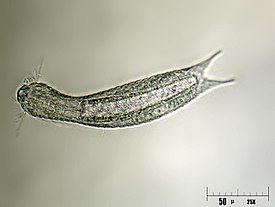
Phylum Gastrotrichia
Name means “stomach hair”, these are all cilia on the ventral surface, with tufts on the head.
Found in marine and freshwater environments
They have structures that look like “toes”, which has adhesive tubes within (duo glands)
Bi layer cuticle (skin), that is not molted.
Complete gut
Acoelomate (without cavity)
Hermaphrodites or participate in parthenogenesis and are direct developers
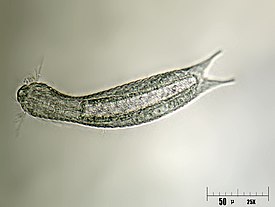
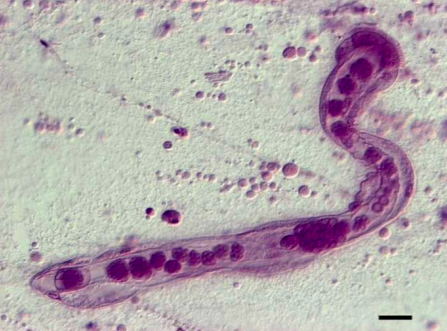
Phylum Dicyemida
Obligate symbiosis with nephridia of cephalopod (think octopus and squid) molluscs
Asexual and sexual reproduction
2 adult forms possible:
Nematogens - asexual: vermiform (worm-like) larva
20-30 ciliated cells with an axial cell that acts as the reproductive center, the axoblast develops within the axial cell and becomes new nematogens
Rhombogens - sexual: infusoriform (circular) larva
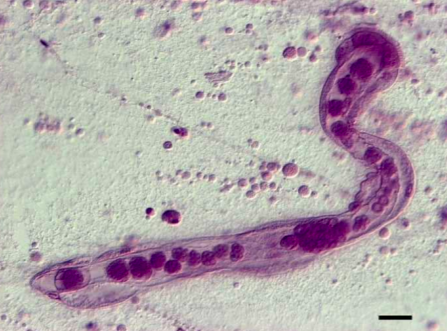
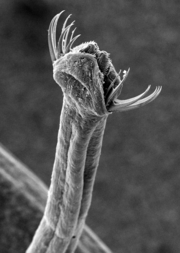
Phylum Chaetognatha
Name means “bristle jaw”
Marine species
Planktonic (few are benthic, deep sea)
Transparent body
Body
Head - ocelli, grasping spines , teeth, hood
Trunk - paired lateral fins
Tail - single caudal fin
4 bands of longitudinal muscle
4 coelomic cavities, 1 in head, 2 in trunk, 1 in tail
Complete digestive system
Contain tetradotoxin against prey
Ciliary fences around face to sense vibrations in the water
No gas exchange or excretory organs (they do diffusion)
They have a nervous system (cerebral and ventral ganglion, eyes with ocelli, and sensory cilia)
Simultaneous hermaphrodite (can self, no internal copulation, exchange of spermatophores) with direct development.
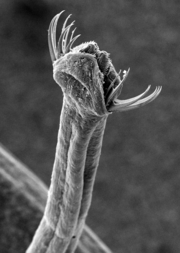
What are defining characteristics of Phylum Gnathifera
Pharyngeal jaws
Blastocoelomate
Eutely
Blastocoelomate
an invertebrate animal with a three-layered body and a pseudocoel, or "false cavity"
Eutely
a condition in which an organism has a fixed number of cells that remains constant throughout its life
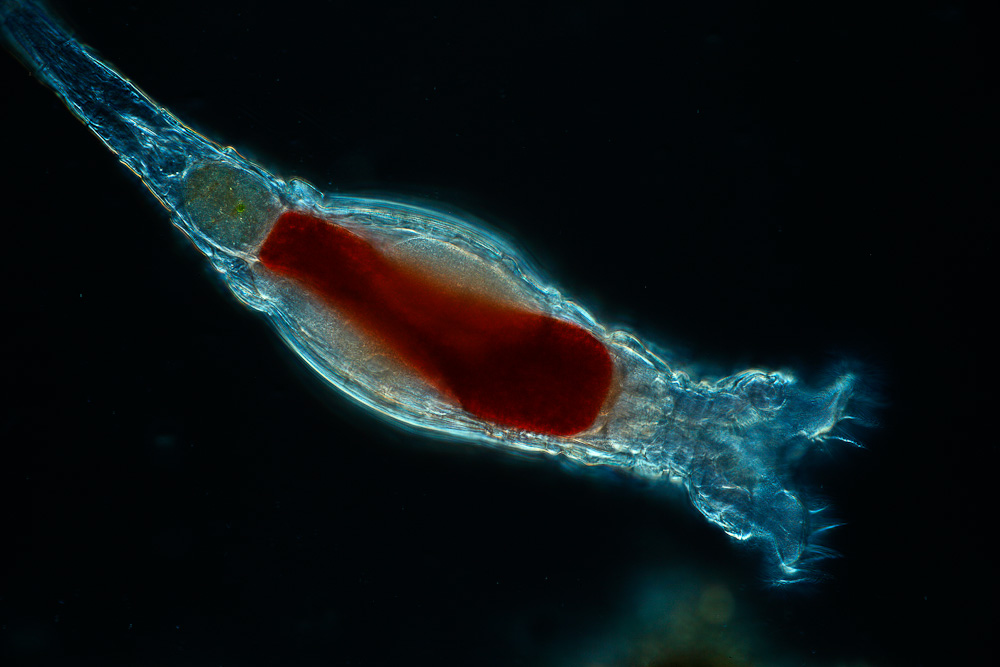
Phylum Rotifera
Name means “wheel bearer” - their wheel has ciliated corona
Muscular pharynx with jaws
Toe has adhesive glands
Syncytial epidermis
Mostly freshwater and freeliving, it is possible for it to be marine or semiterrestrial, and omnivorous
28% of described species are parasitic within vertebrate hosts
Intracellular cuticle is not molted.
Body
Head, trunk, foot (1-4 toes, pedal glands, can be used for locomotion)
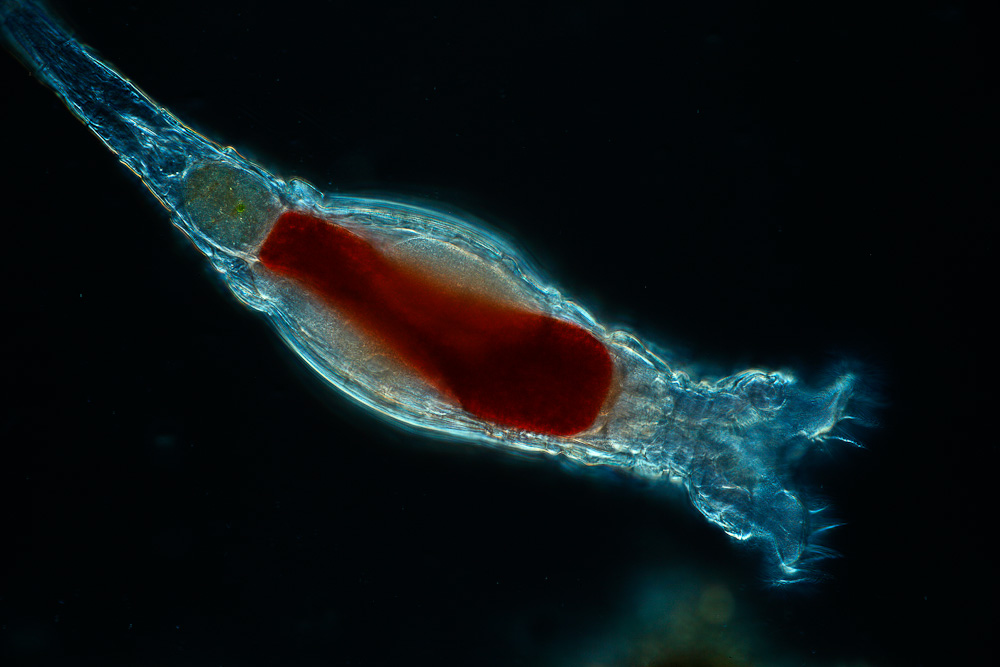
Syncytial
a mass of protoplasm containing many cell nuclei
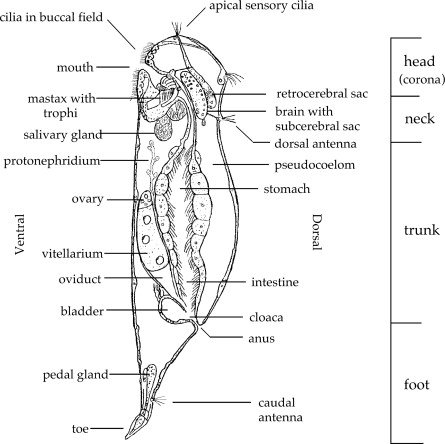
Rotifera: Head
Two main parts:
Corona with a trochus and cingulum (used for feeding and locomotion
Mastax - muscular pharynx with teeth (trophi)
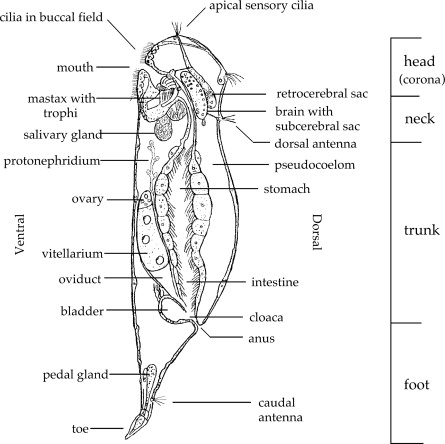
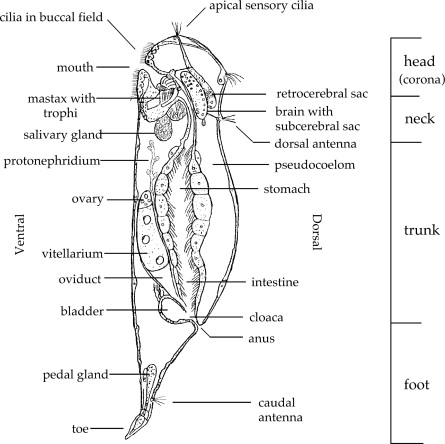
Rotifera has…
complete digestive system with gastric glands (oooo complex girly) and a bilobed brain (smart gorl), two longitudinal nerve cords, sensory bristle, sensory systems, ocelli
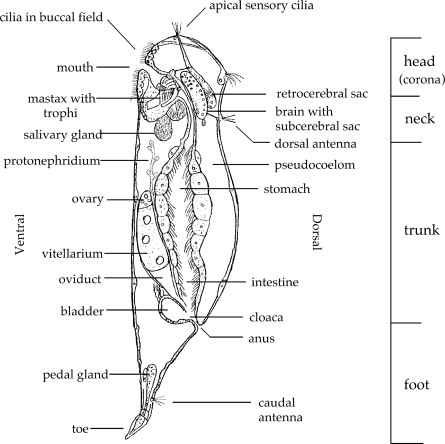
Gnathifera is…
a group of organisms with complex structures for such small creatures, remember complicated!!!!
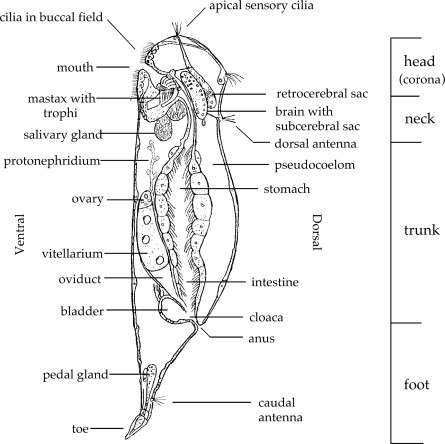
How are rotiferans specialized
They experience cryptobiosis, which is a state of suspended life functions to survive during a time of change or lack of resources.
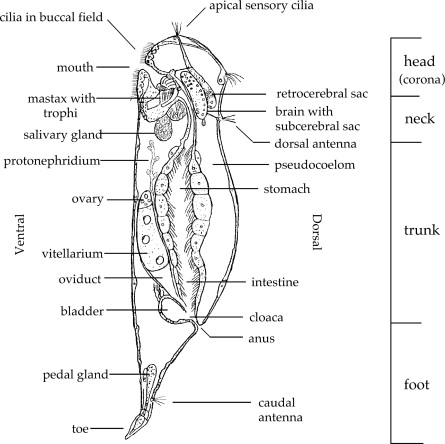
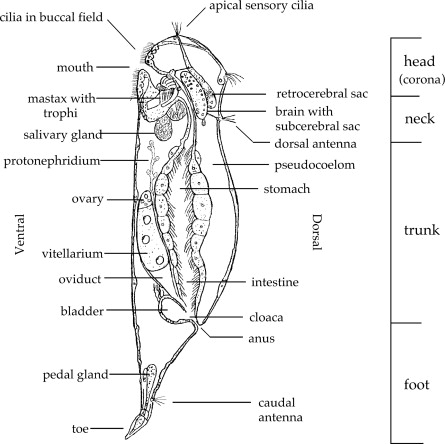
Rotifer osmoregulation
Use of protonephridia (primitive kidney) and bladder where nitrogenous wastes diffuse across the body wall

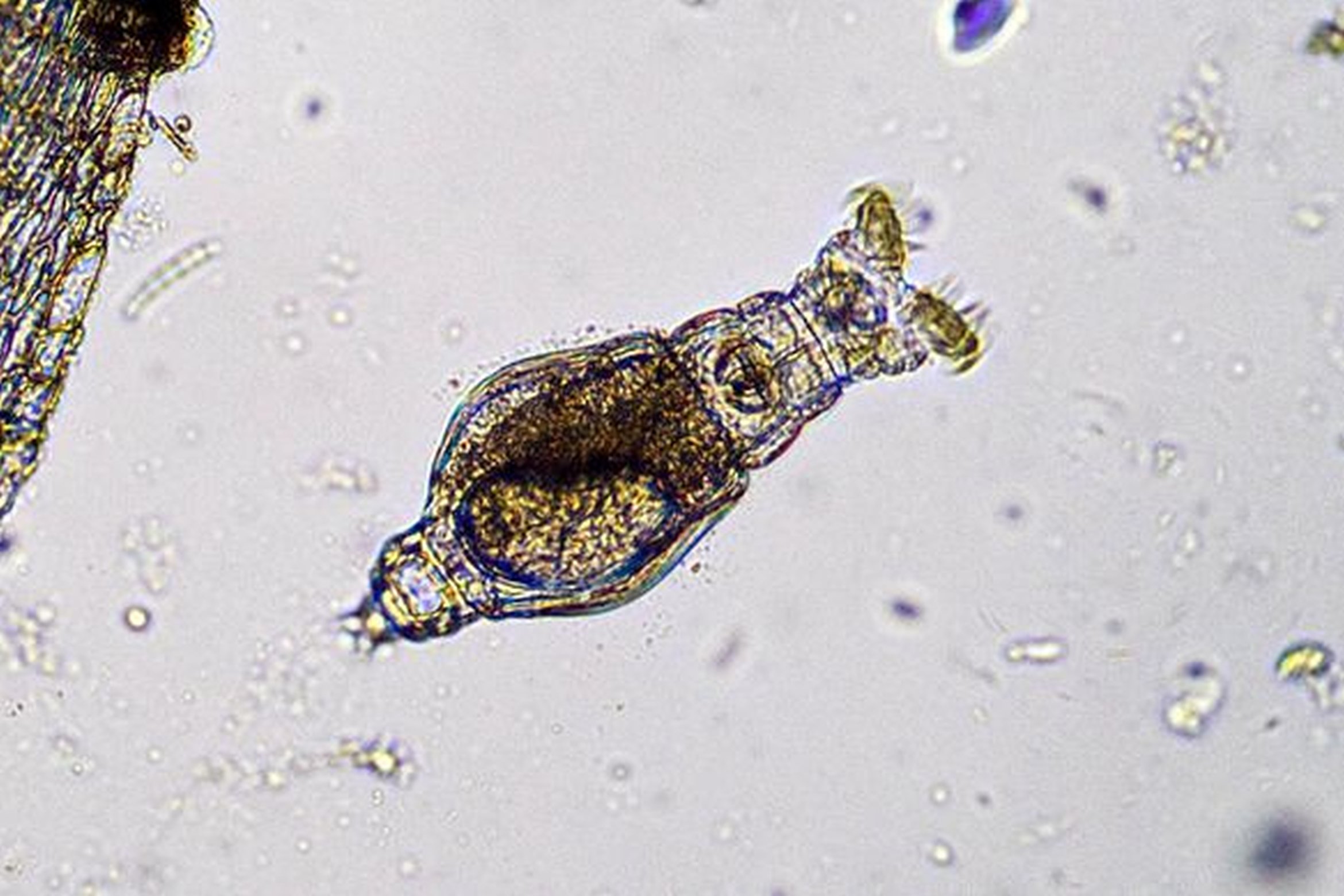
Rotifer reproductive strategies
Sexual and asexual processes possible
Sexual - dimorphic, with internal fertilization
Parthenogenesis, asexual, females only.
They also have a cycle that combines the two methods.
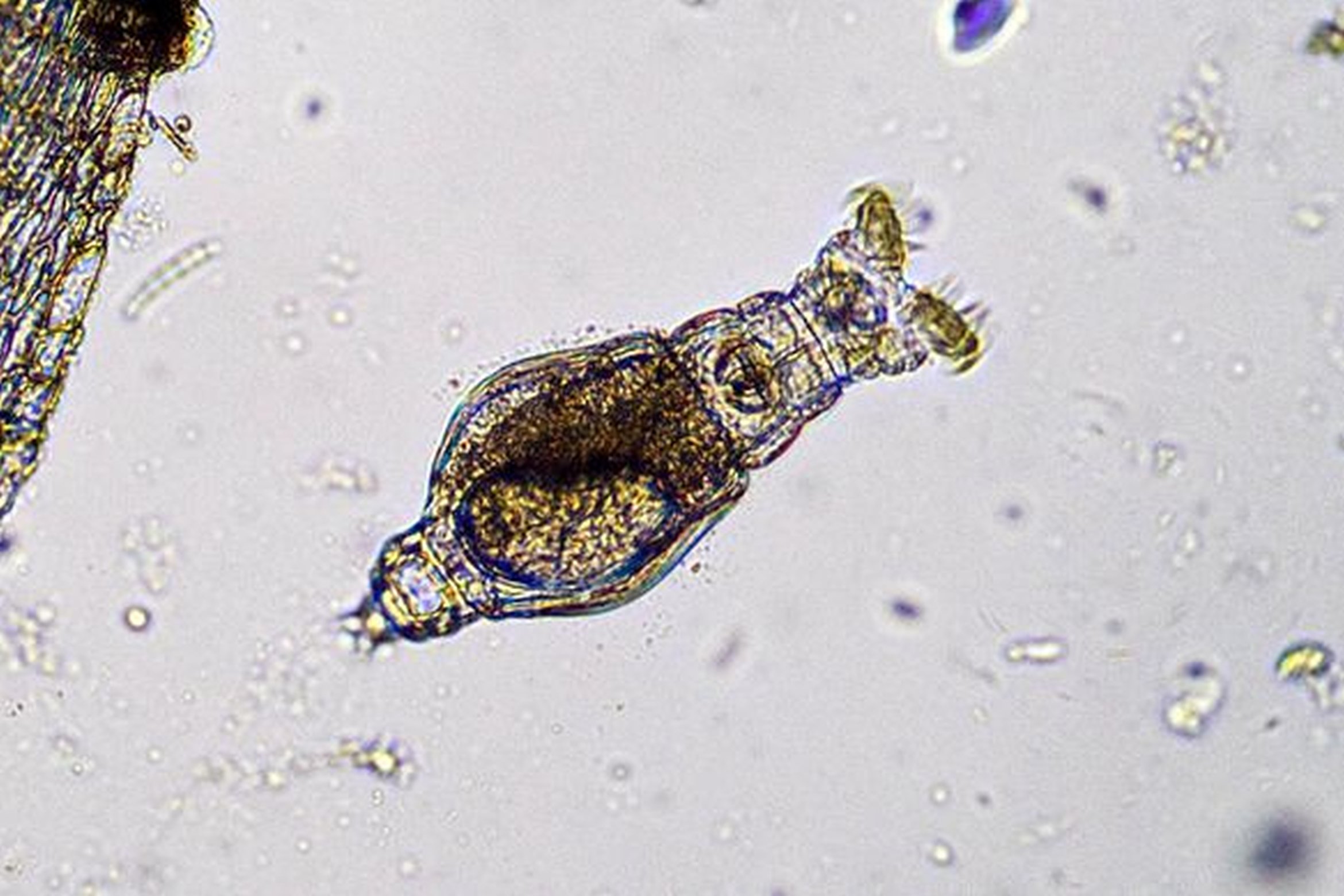
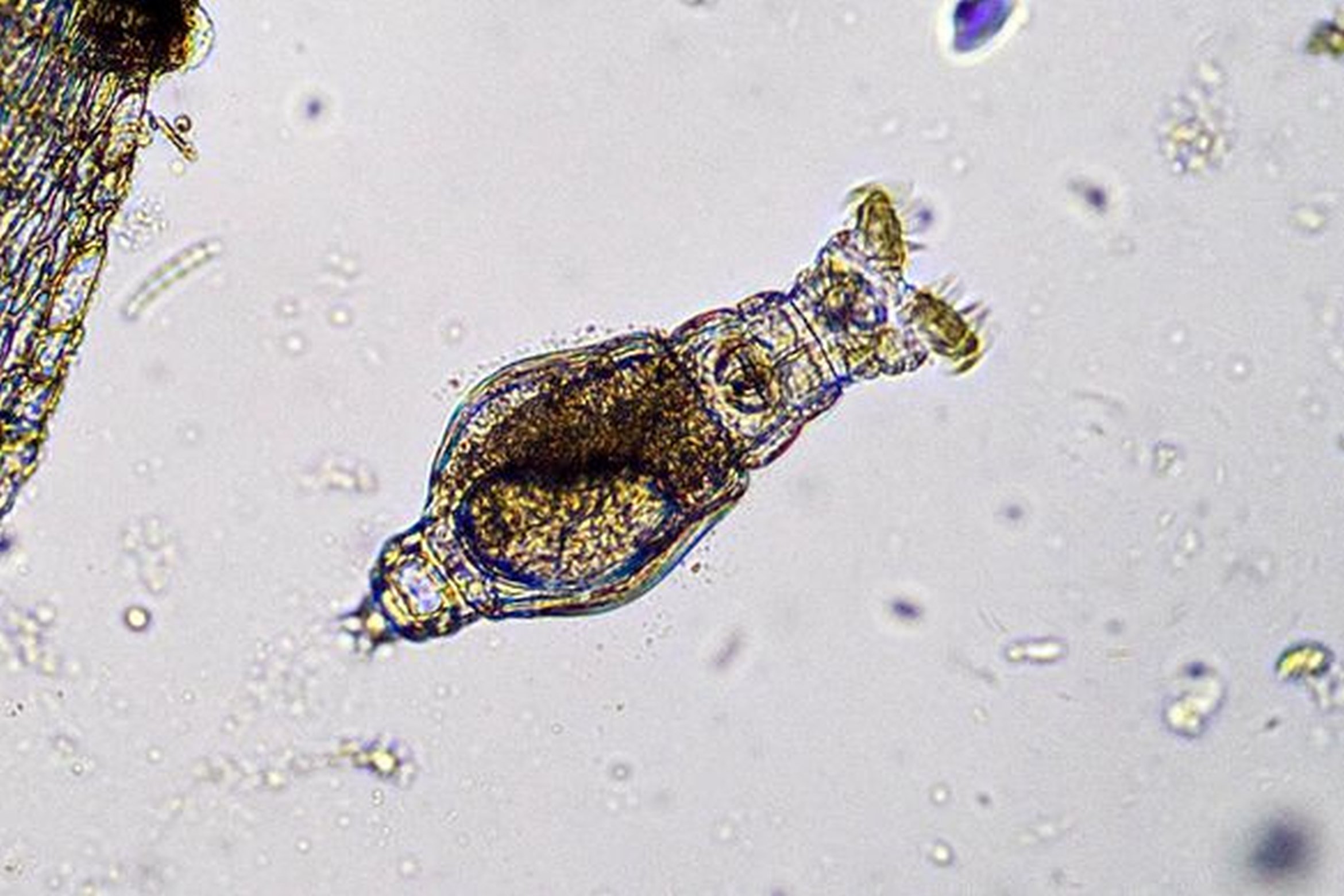
Monogonota
One gonad
Influenced by seasonal and environmental cues
Amictic phase - 2N which is done by mitosis, this phase follows parthenogenesis and is always female diploids.
Environmental stimuli causes meiosis to occur, haploid males and females occur in where they are eggs and sperm, with fertilization diploid female eggs are made.
They are hatched and follow the parthenogenesis cycle.
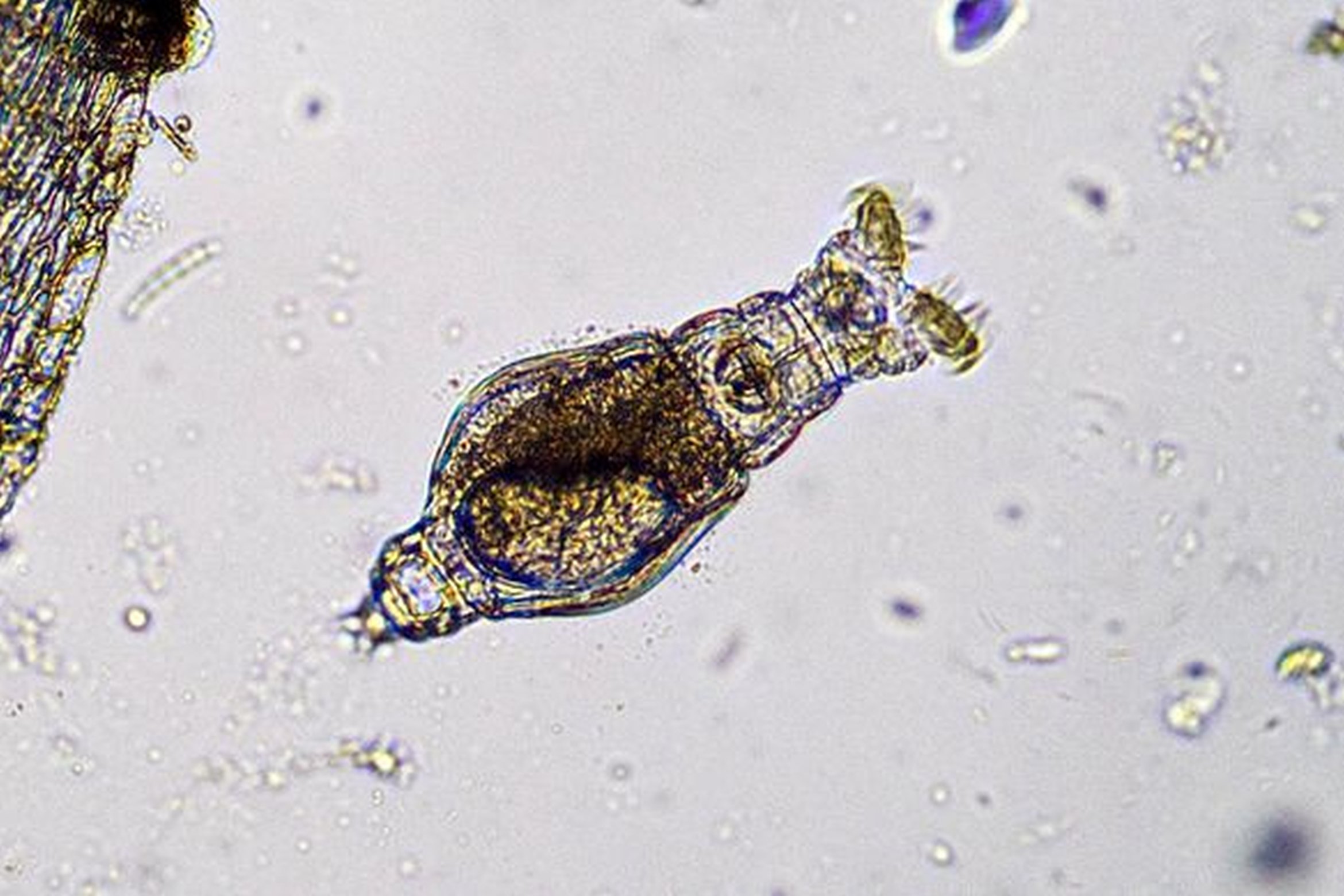
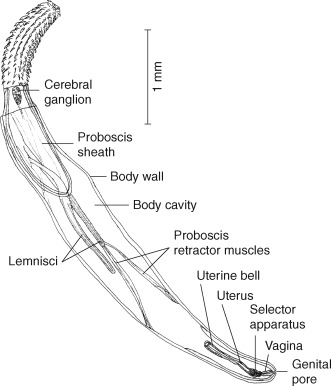
Subclass Acanthocephala
Meaning prickly head
1-2 ligament sacs that support the gonads
Have a proboscis with intracellular hook
All are parasitic in vertebrates, with an intermediate host in arthropods
They were previously placed in a separate grouping but molecular data places them as rotifers.
Three body parts:
Proboscis - hollow and retractable with hooks or spines
Neck
Trunk with pseudocoel
No main organ systems and reduced sensory structures - since they do not need to develop them if they get broken down food from host.
Reproduction - mostly gonad, separate sexes (internal fertilization, males have a cement gland, and females have ovarian ball and uterine ball), acanthor (mature embryo) larvae

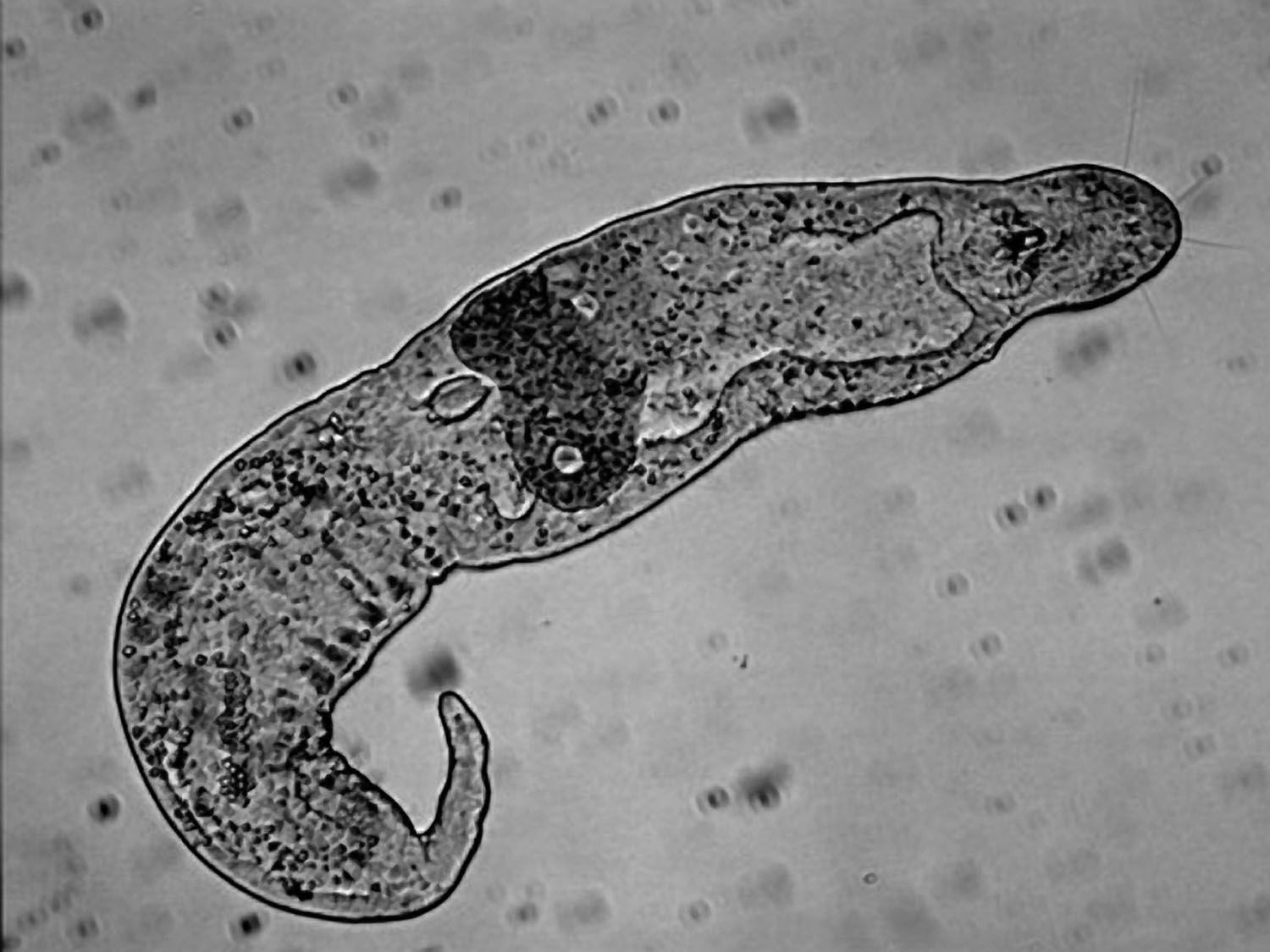
Phylum Gnathostomulida
Name means “jaw mouth”
Related to rotifers
Wormlike
Lives in marine sediment
Acoelomate
Ciliated outer surface, each cell has a single cilium
Incomplete digestive system
Simultaneous hermaphrodites, internal fertilization, and direct development.
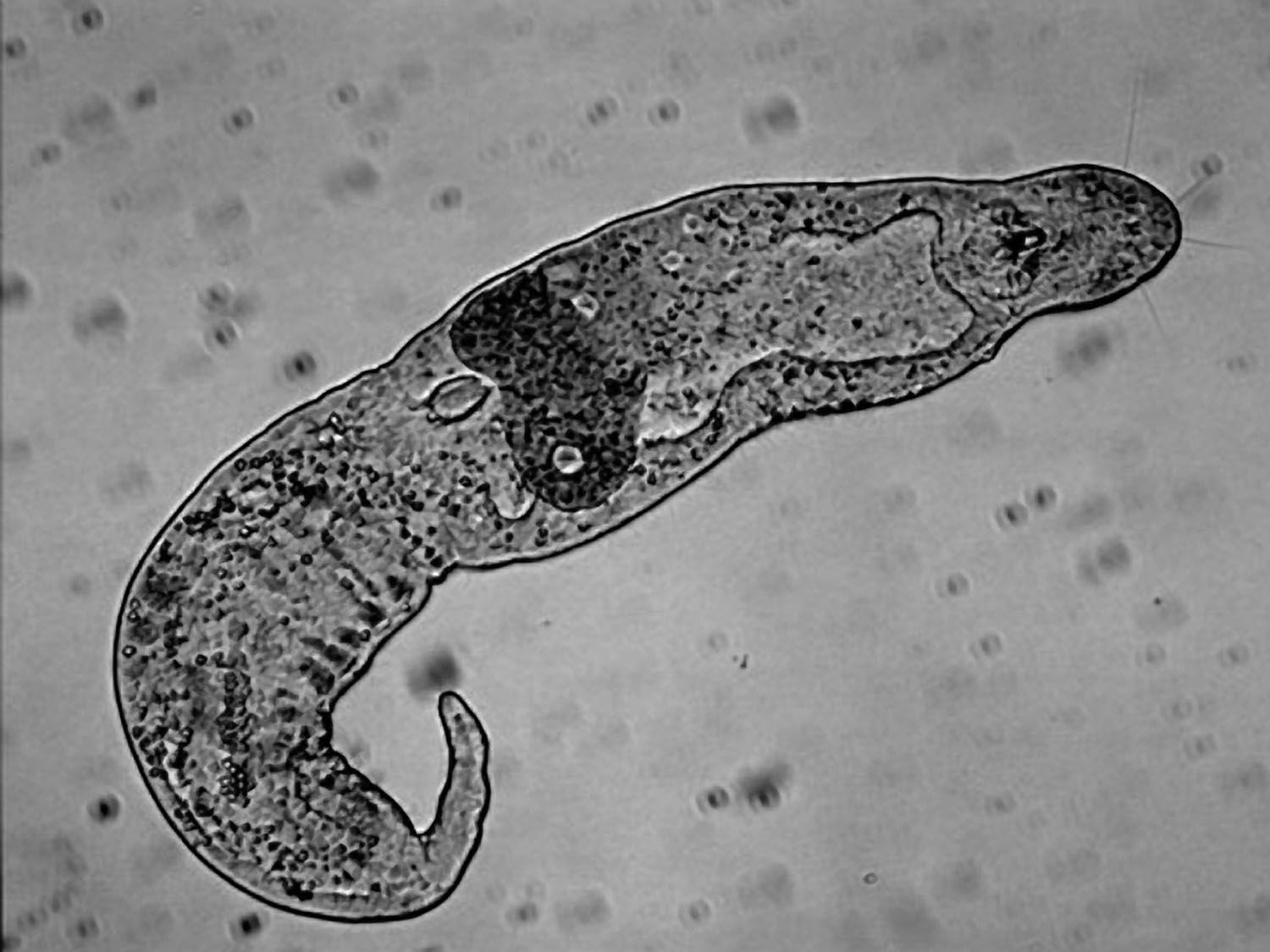

Phylum Micrognathozoa
Single species
2 part head with complex set of 4 jaws
Dorsal and lateral epidermal plates
Ciliated ventral epidermis (ciliophores), they swim in a spiral.
Posterior adhesive structure
3 pairs of protonephridia structures (primitive kidneys)
Might be only female, but since very few have been found, there is no way of knowing.
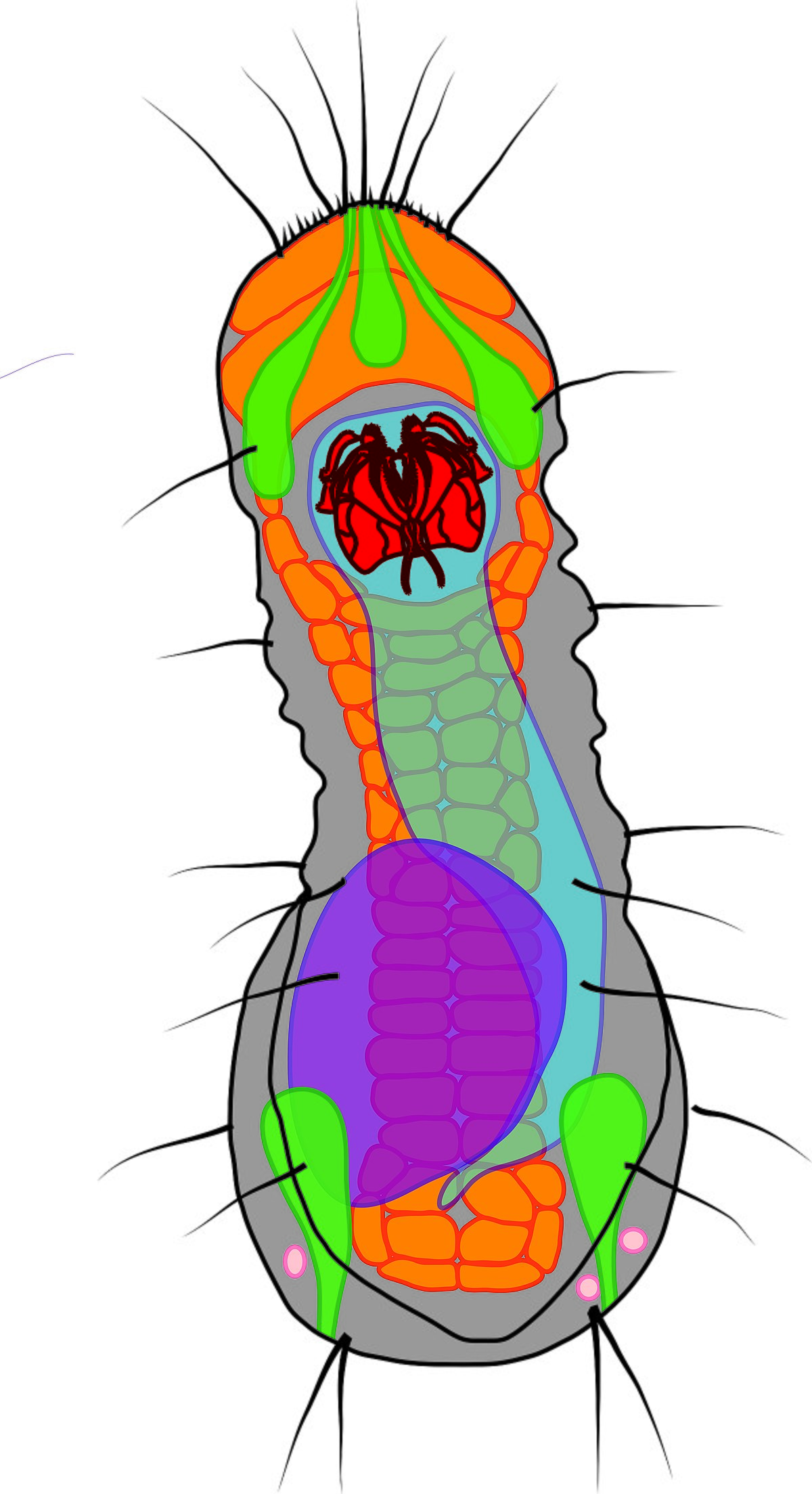
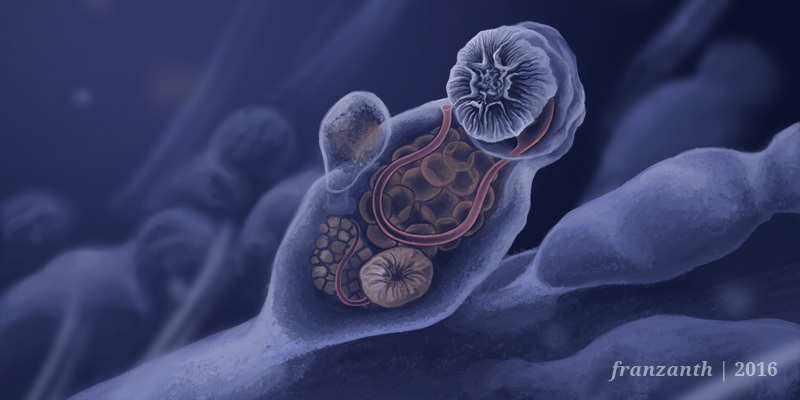
Phylum Cycliophora
Name means “small wheel”
A few species have been described
Symbiont with lobsters and other decapods
Chordoid larva with mesodermal rod of muscle cells
Acoelomate
Ring of compound cilia around the male
Cuticle present
U-shaped gut
Adhesive disc
Feeding structure and brain are replaced periodically via budding
Asexual and sexual production, female asexual larvae, sexual chordoid larvae and prometheus larvae that is timed to release when the host molts
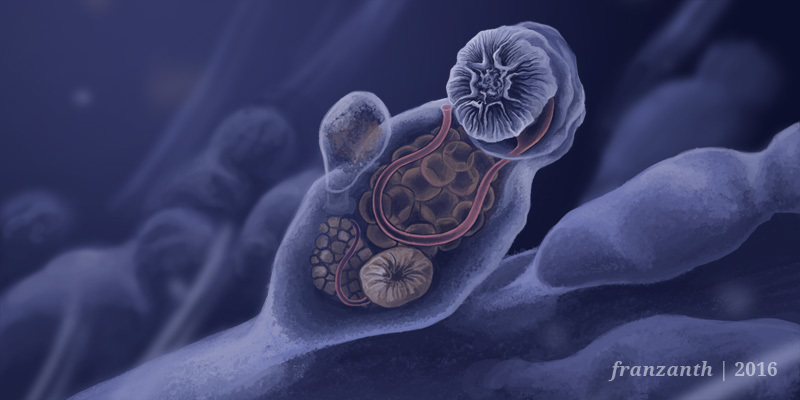

Chordoid larva
develops from an embryo that grows inside a chordoid cyst and engulfs the tissue of the mother animal. Once freed from the cyst, the chordoid larva can swim to a new host
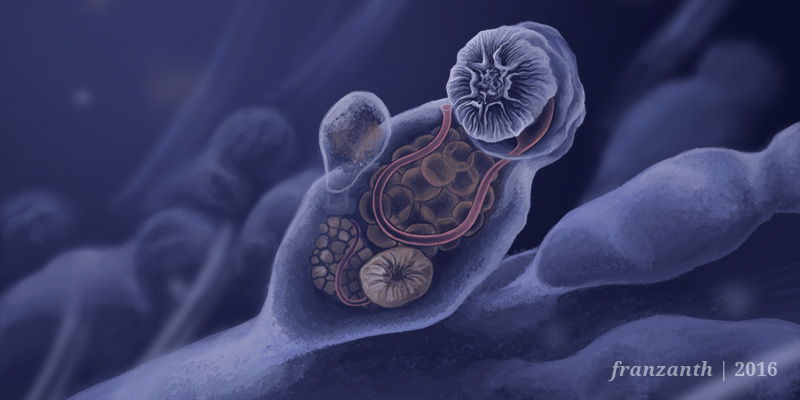
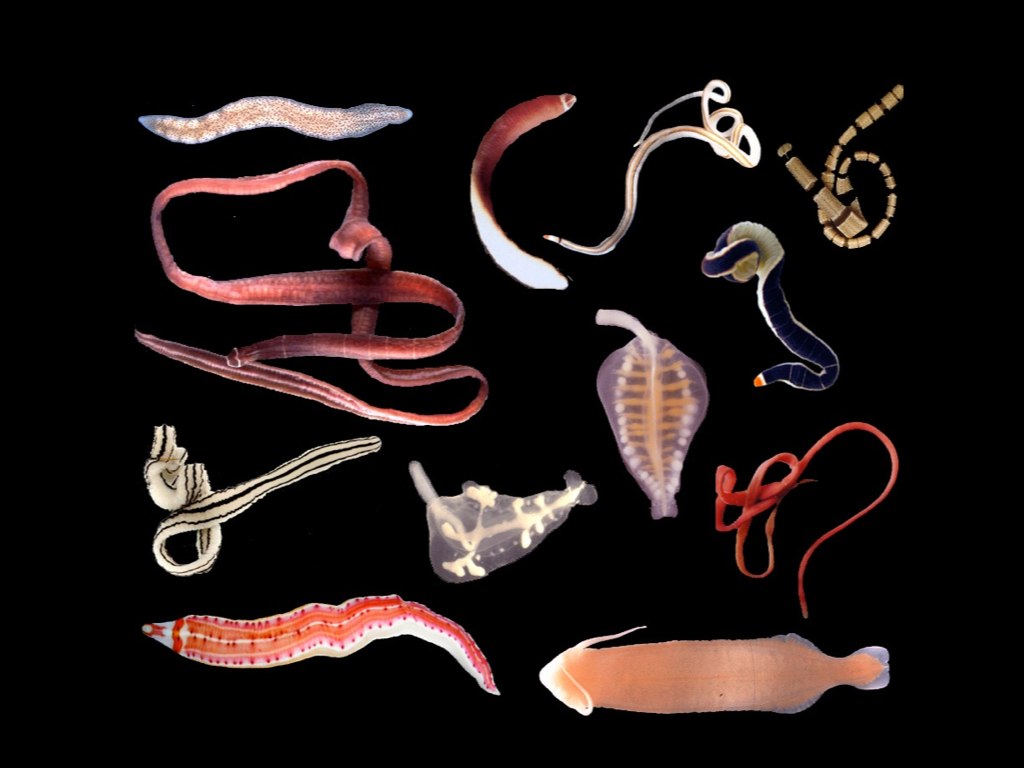
What are nemerteans?
ribbon worms
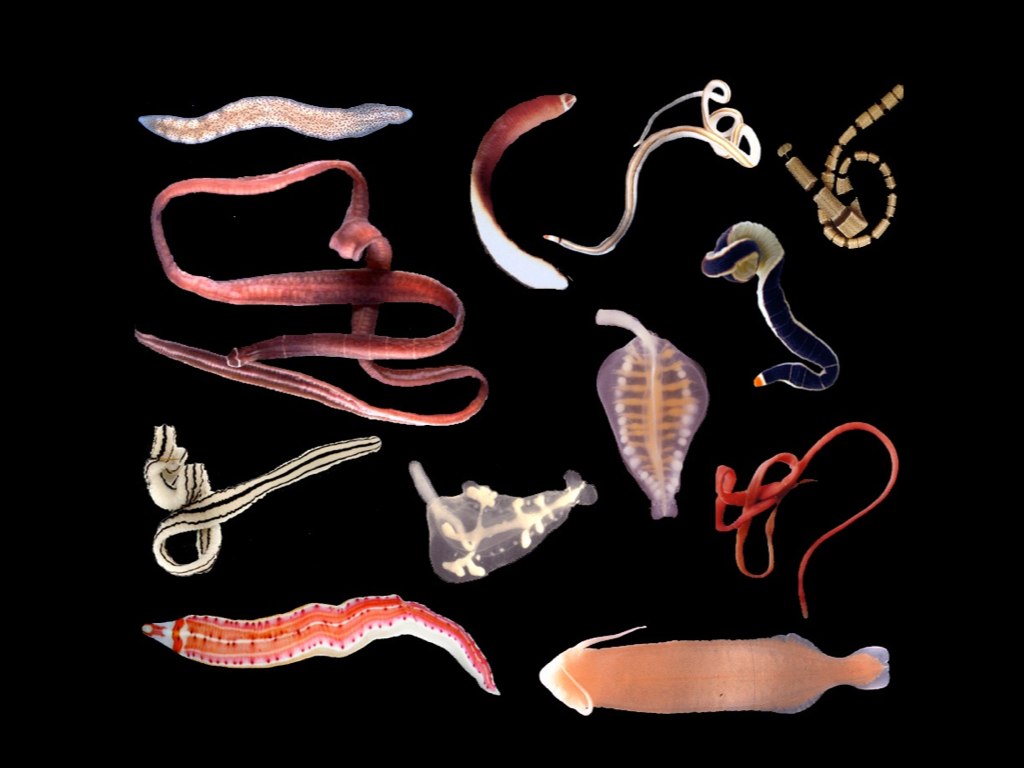
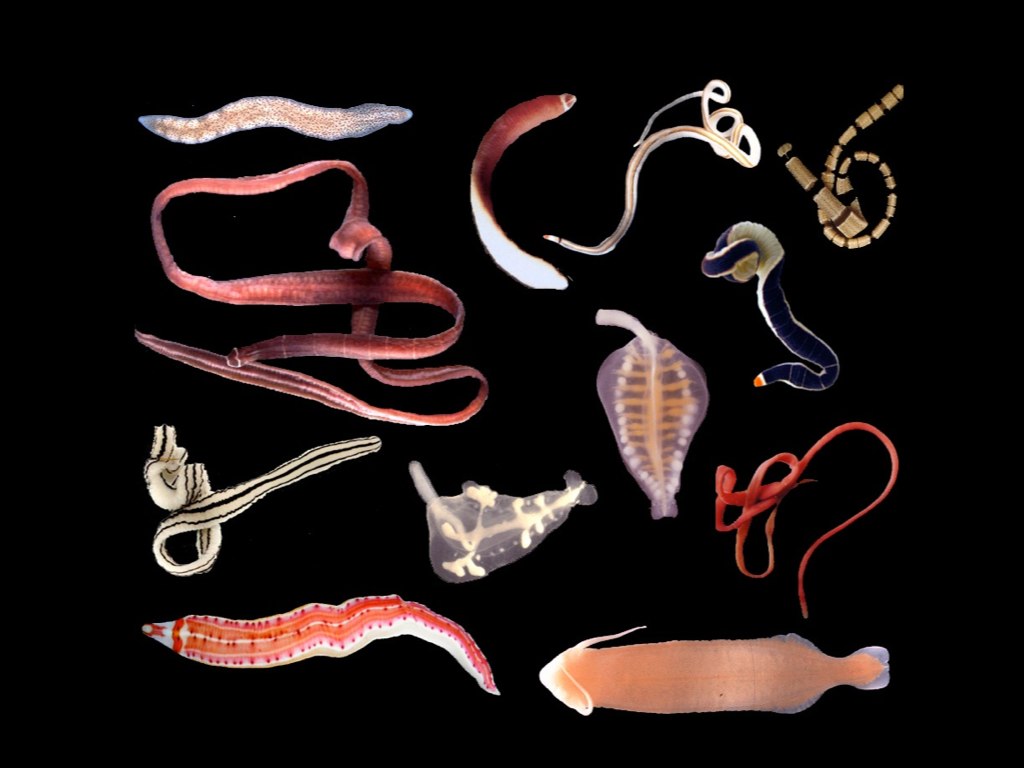
Phylum Nemertea
Name means snout cavity
Mostly marine with a few freshwater and terrestrial species
Can be small (1cm) to very long (30m)
Eversible proboscis contained in a fluid filled schizocoelous chamber - Rhyncocoel
They superficially resemble flatworms, with their ciliated epidermis that secretes mucus
Proboscis - moves in and outward via hydrostatic pressure, has a retractor muscle, may have a stylet and poison gland, not connected to gut typically.
Most are predatory and leave a chemical trail, if they do not have the stylet, they will entangle the pray with their proboscis.
Asexual and sexual reproduction
Asexual - fragmentation
Sexual - Dioecious, spawn through pores and ruptures out the body, external fertilization, spiral determinant cleavage, direct development or pilidium larvae
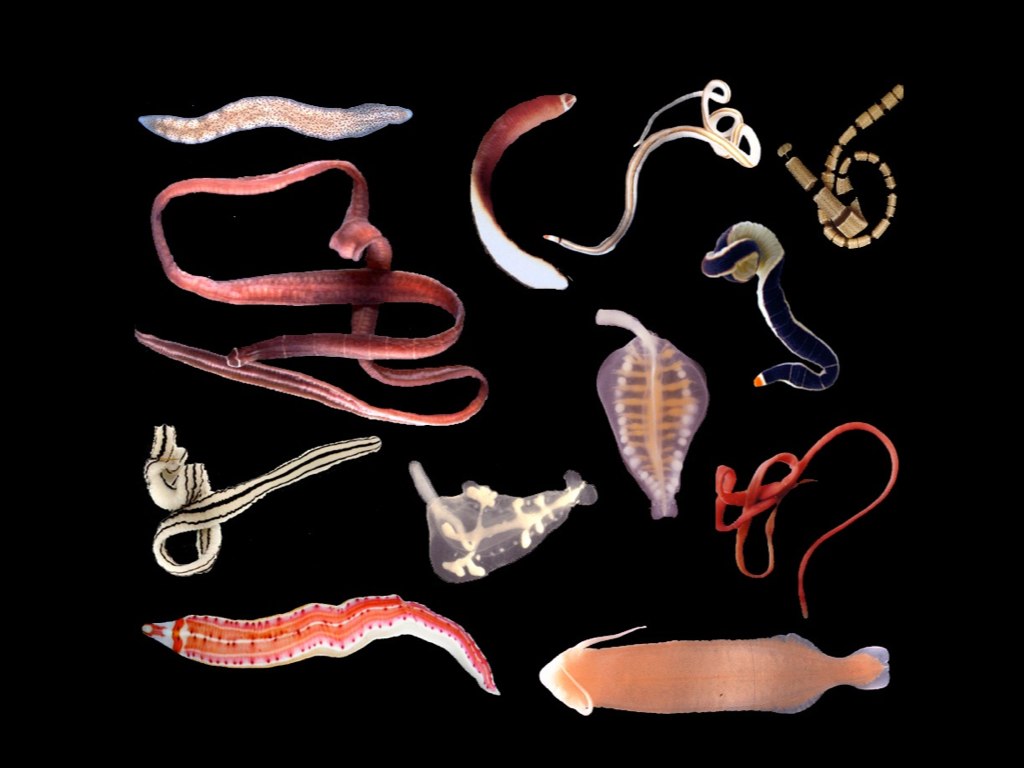
Eversible
something can be turned inside out or outward
Rhyncocoel
a fluid-filled cavity in certain invertebrates, particularly nemertean worms, that houses the worm's proboscis
Schizocoelous
relating to a type of embryonic development in which a solid mass of mesodermal tissue splits to form secondary body cavities, or coeloms
How do nemerteans and platyhelminthes resemble each other?
Ciliated skin
Dorso-ventrally flattened
Circular, longitudinal, and a third layer of muscle
Ladder like nervous system
Similar sensory structures such as ocelli, chemo- and mechano- receptors and cephalic grooves
Nephridial system (function similar to kidney)
How do nemerteans and platyhelminthes differ?
Nemerteans:
Closed circulatory system - lateral vessels and lacuna, no heart, the vessels contract to pump fluids around the body
This allows for a larger size, more muscles, more activity
One way digestive system, mouth and anus present, allows for continuous eating since they don’t spit digested waste back out of the mouth, they have regional specialization (organs we also have, esophagus, stomach, intestine with diverticula, and anus)
spiral determinant cleavage
a type of cell division that results in determinate cells, which means the fate of each cell is predetermined early in development
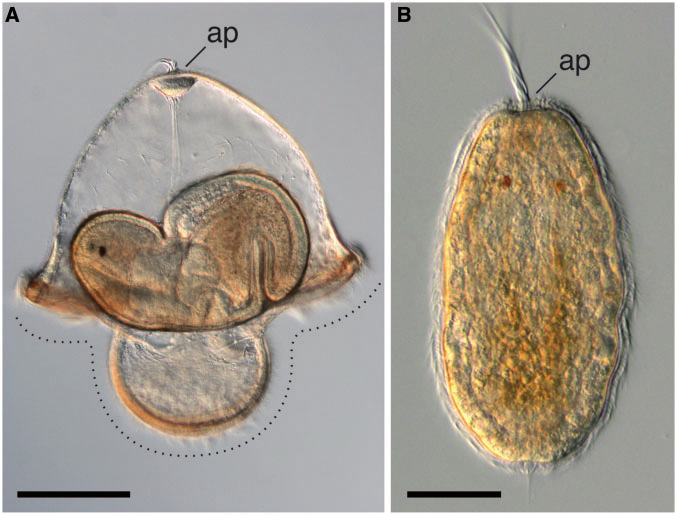
Pilidium larvae
meaning “cap” because the typical pilidium larva is shaped like a hat with earflaps that are pulled down over the ears
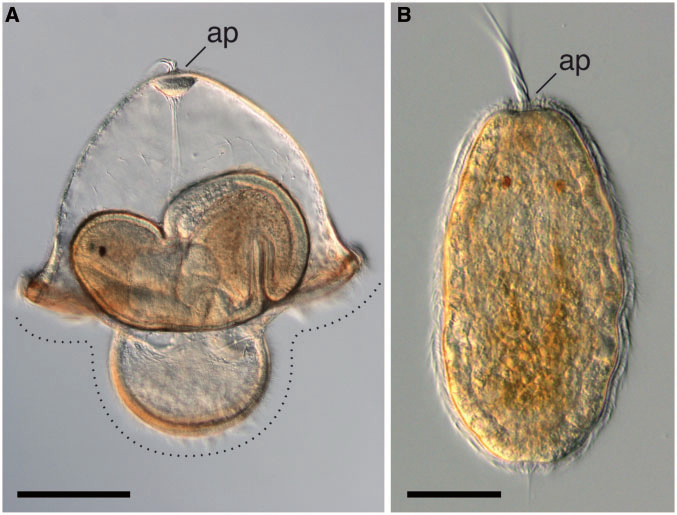
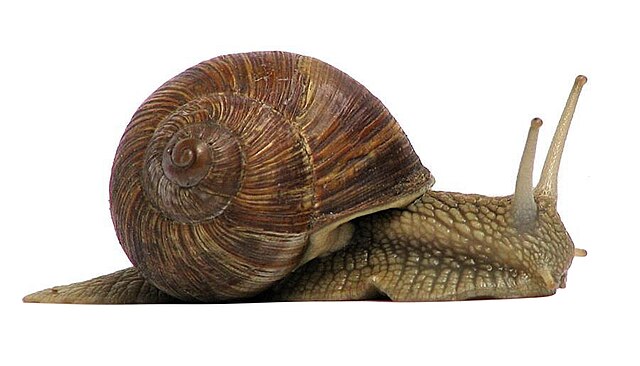
Phylum mollusca
Found in all habitats - many species
7 classes
Eucoelomate and bilateral symmetry
Unsegmented body
Protostome body
Visceral mass in concentrated along the back
Characteristics:
Mantle - epithelium that covers body and excretes spicules or shell, with three layers. house the organs
Radula - circular band of teeth (odontophore)
Foot - ventral muscles
Open circulatory system - hemocoel
Heart composed of 2 atria and a ventricle, respiratory pigments are Hb and Hemocyanin
Well developed nervous system
Complete gut - specialization with digestive glands
Complex excretion metanephridia
Heart-kidney complex
Podocytes in the atria (ultrafiltration)
Nephrostome open to pericardium
Trochophore larvae
Veliger

Shell layers
Periostracum - outer
Prismatic - middle
Nacreous - inner
Hemocoel
the primary body cavity of most invertebrates, containing circulatory fluid
Podocytes
specialized cells in the kidney that help maintain the glomerular filtration barrier and prevent plasma proteins from entering the urinary tract
Trochophore
planktonic larva of certain invertebrates, including some mollusks and polychaete worms, having a roughly spherical body, a band of cilia, and a spinning motion.
Veliger
the final larval stage of certain mollusks, having two ciliated flaps for swimming and feeding.
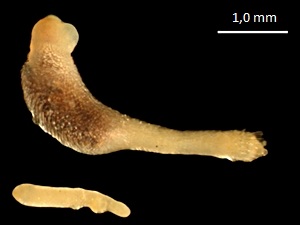
Class Aplocophora
Worm like
No shell - has scales
Rudimentary mantle on the posterior region
Foot reduced or absent
Close relative of chitons
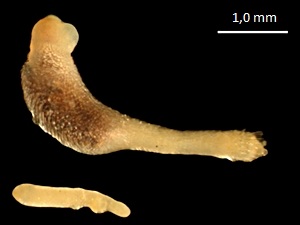
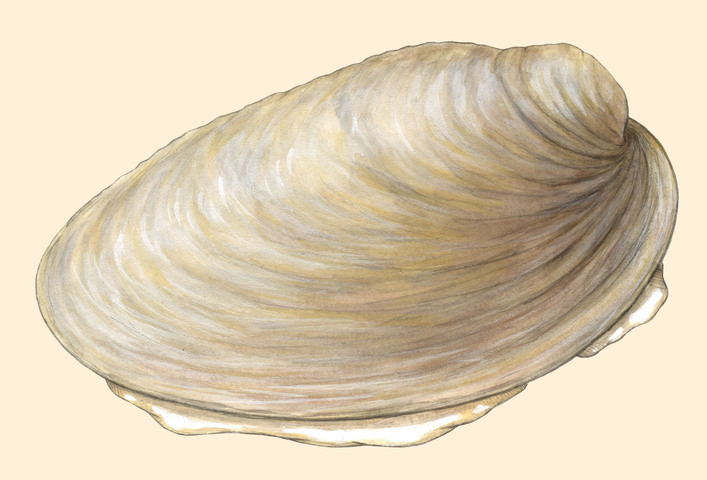
Class Monoplacophora
Single, cap-like shell
Primitive
Deep sea
Repeating pairs of organs
3-6 pairs of ctenidia, 3-7 pairs of metanephridia, 2 pairs of gonads, 2 pairs of atria

Ctenidia
respiratory organs, or gills, found in many mollusks, including bivalves, cephalopods, Polyplacophorans, and aquatic gastropods
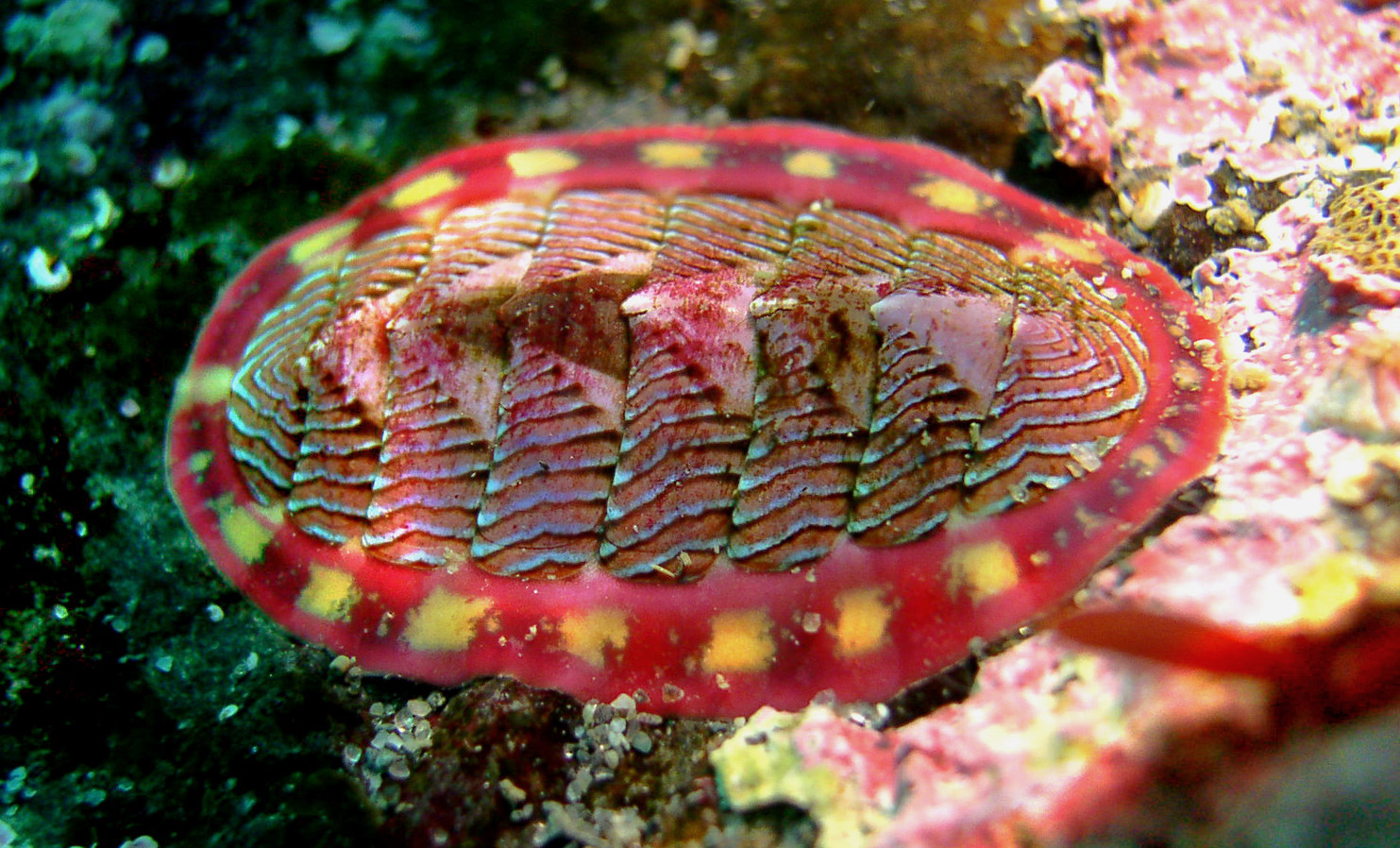
Class Polyplacophora
Known as chitons
Flattened and elongated
Found on hard substrates, many are intertidal
8 dorsal plates that overlap
Mantle forms a thick girdle that can obscure plates
Broad ventral foot with pedal waves
Mantle encircles foot
6-80 pairs of ctenidia
1 pair of nephridia
No eyes, tentacles, or sugar glands
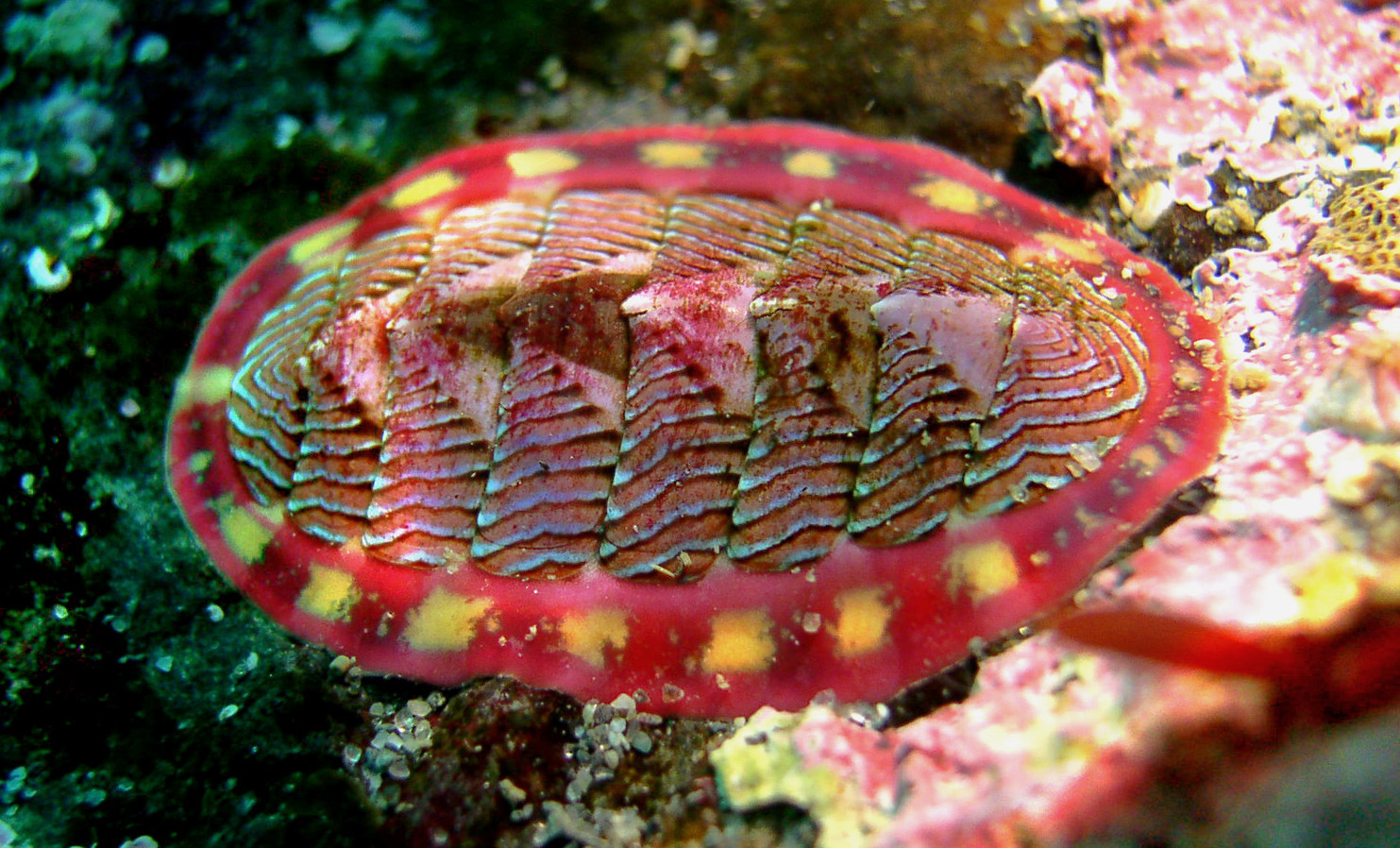
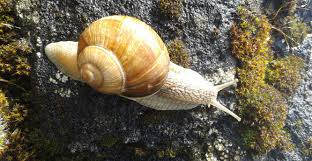
Class Gastropods
Stomach foot
Largest group of mollusks in all habitats
Muscular creep foot with pedal waves, monotactic vs. ditactic
Head with statocysts, eyes, and tentacles
Complex radula and crystalline style
Mantle cavity
Ctenidia
Osphradia
Hypobranchial gland
Asymmetric coiled shell
Operculum
Columellar muscle
Reduction or organs on the right side - dextral
Herbivorous or predatory
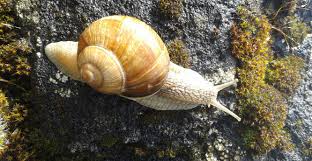
Osphradia
a sensory organ in most aquatic mollusks that tests the quality of water passing to the gills
Operculum
anatomical feature, a stiff structure resembling a lid or a small door that opens and closes, and thus controls contact between the outside world and an internal part of an animal
Columellar muscle
adductor muscles of bivalves shorten to close the shell or relax to allow the shell to spring open, enabling the mollusk to extend its foot
Dextral
of or on the right side or the right hand
Gastropod torsion
Rotation of the body 90 to 180 degrees during development
Mantle cavity moves towards the anterior and the posterior is now located above the head
Gut and nervous system is twisted
Detorsion
Detorsion
the process of correcting an abnormal twist or torsion in the body
To avoid fouling in gastropods
Hole in the shell would weaken the shell
Mantle folded to make a siphon to increase gas exchange
Change water flow direction - left to right, anus on the right.
Class Gastropoda
Subgroups:
Prosobranchia - typical gastropod
Ophistobranchia - pteropods, nudibranchs
incomplete torsion or detorsion
Shell reduced or absent
Rhinophores
Reduction/loss of ctenidia
cerrata
Pulmonata - Lung snails
Pneumostome - no ctenidia
Rhinophores
one of a pair of chemosensory club-shaped, rod-shaped or ear-like structures which are the most prominent part of the external head anatomy
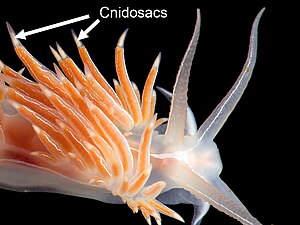
Cerrata
dorsal and lateral outgrowths on the upper surfaces of the body of these nudibranchs
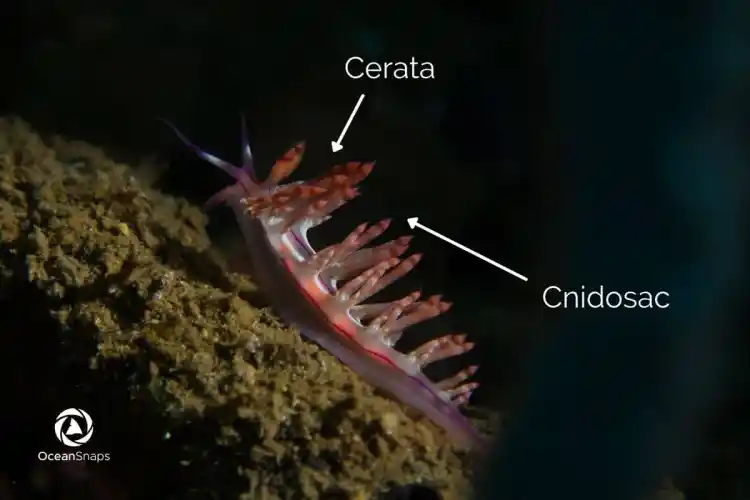
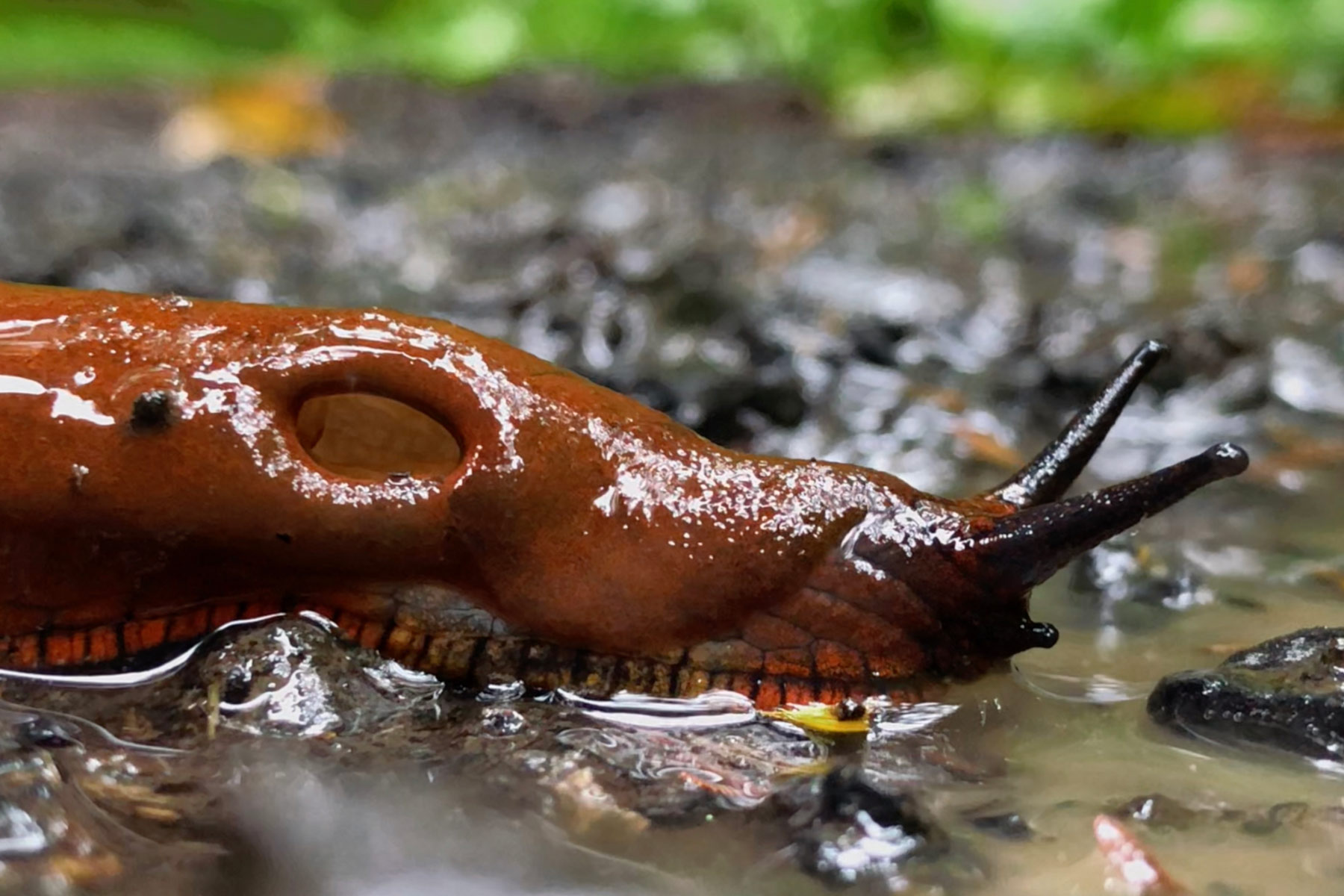
Pneumostome
breathing pore is a respiratory opening of the external body anatomy of an air-breathing land slug

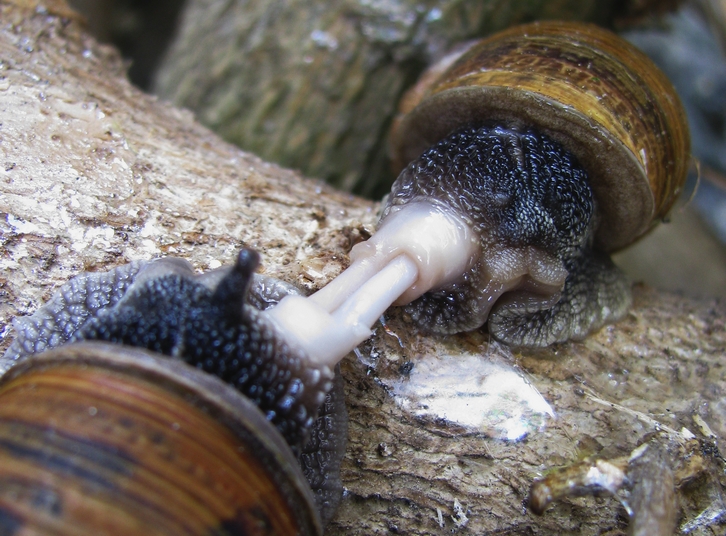
Gastropod reproduction
Prosobranchs are diecious
Opistobranchs and pulmonates are hermaphroditic
Reciprocal insemination
Internal fertilization
Hatch as veligers or direct developers
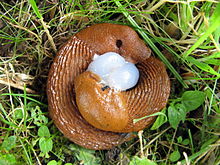

Class Scaphopoda
Tusk shells
All marine
Lack ctenidia, heart/circulatory system, and osphradium
All live in sediment
Feeding tentacles are called captacula
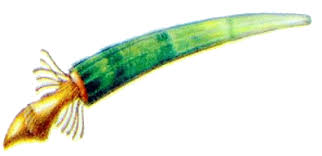
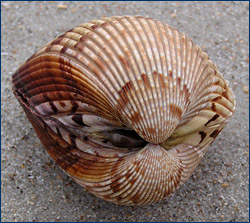
Class Bivalvia
Two valves (shells) connected by a hinge joint
Includes clams, oysters, mussels, and scallops
Marine and freshwater
Lack of cephalization (head)
Large mantle cavity
Sedentary (does not move)
Absence of radula (mouth)
Lateral compression of the body
Shells grows from a point called the umbo
The shell is opened and closed by 1 or 2 adductor muscles
Foot is anterior and gills are posterior
Water enters and leaves posteriorally through the siphons.
Siphons are a modified mantle, Bottom one in incurrent (bring water in), top is excurrent (pushing water out), this helps with gas exchange.
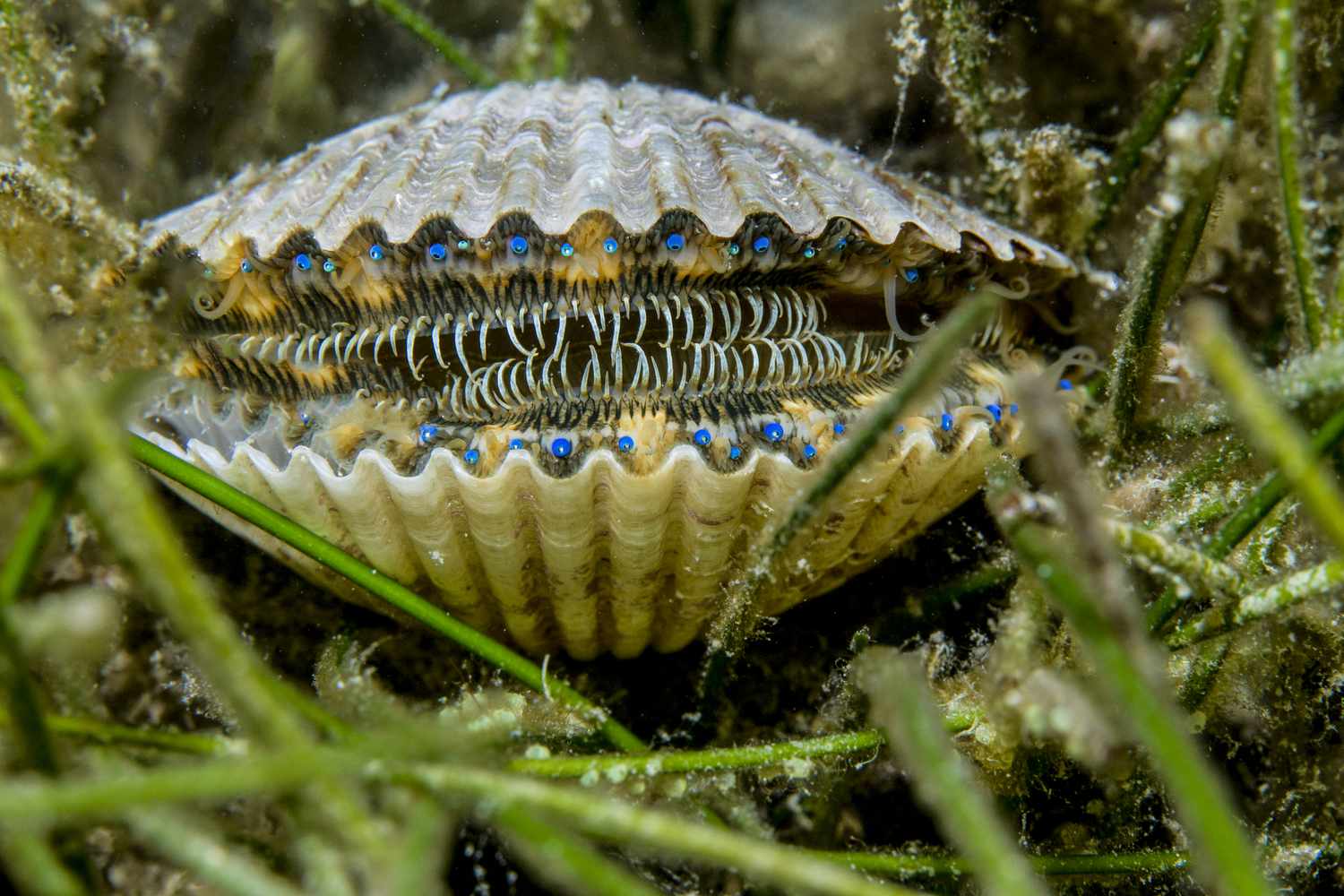
Subclasses of Bivalvia
3 subclasses:
Protobranchia - Primitive, deep sea
Lamellibranchia - greatly enlarged gills used for feeding purposes
Septibranchia - predatory and very rare
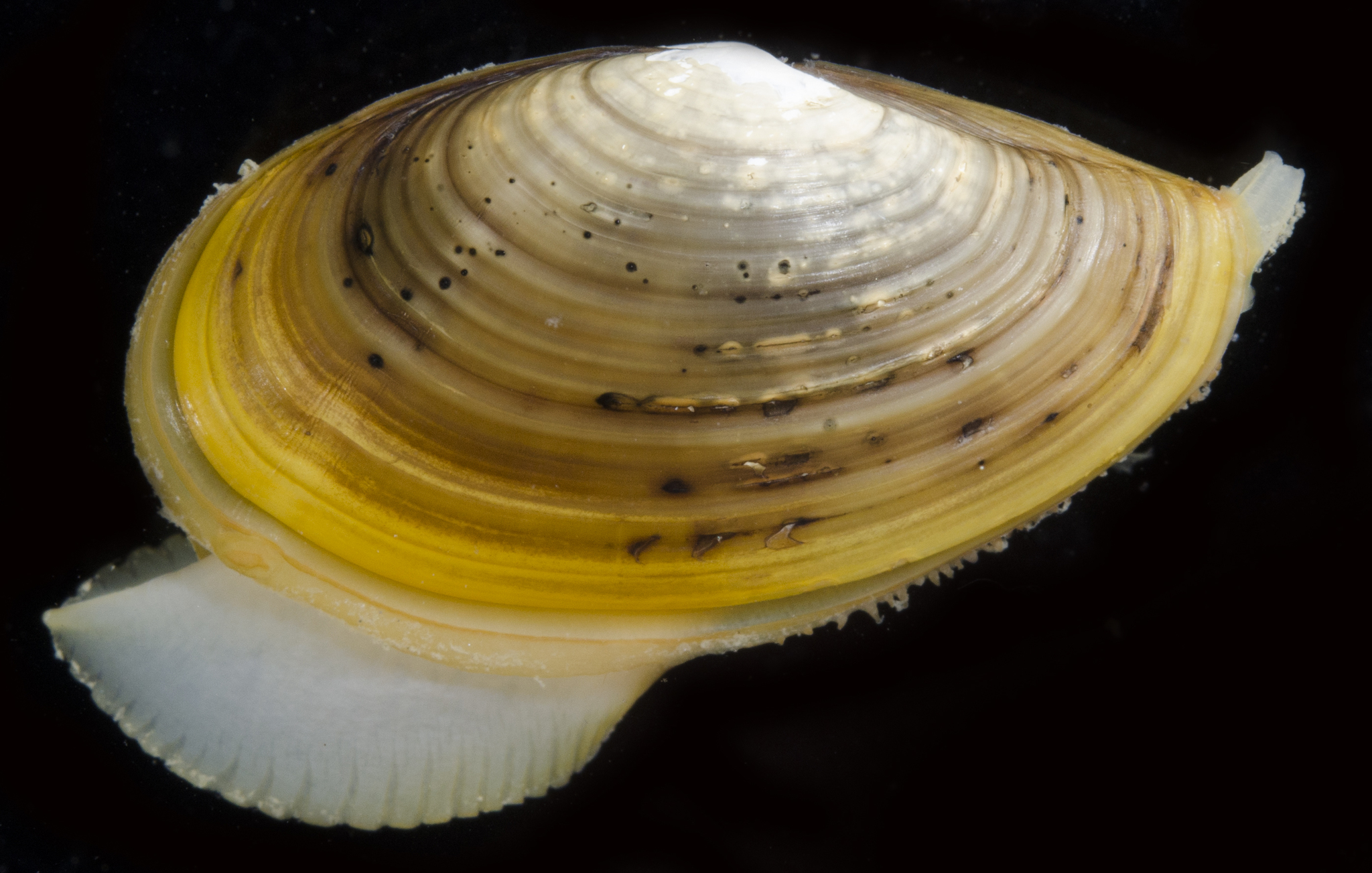
Protobranchia Feeding
Gills are small and used for gas exchange
Have tentacles around the mouth that secrete mucus and traps food particles. They are sorted by size by labial palps. They have pseudofeces.
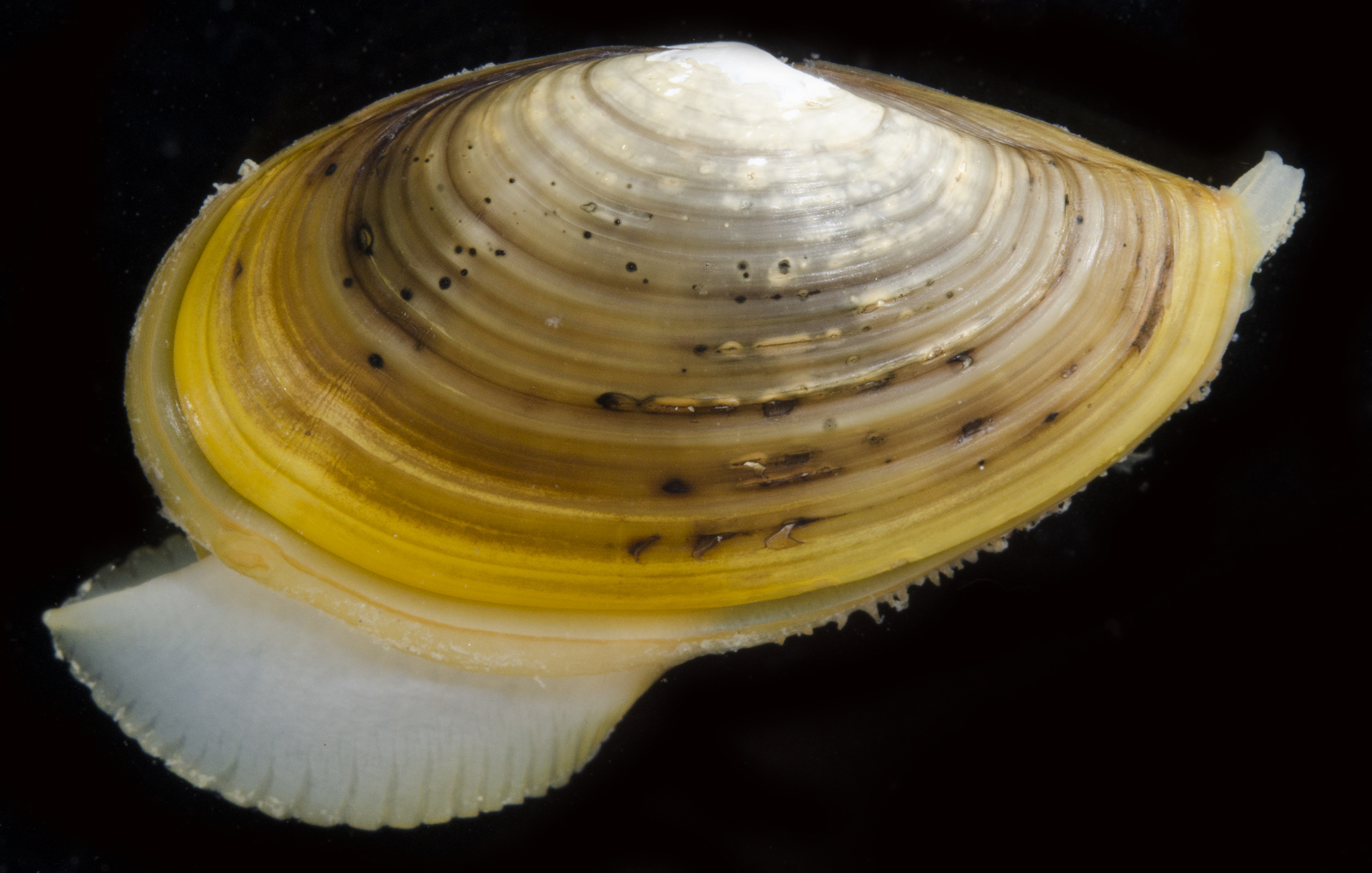
Labial palps
a pair of symmetrical flaps in bivalves that are involved in feeding. functional for particle processing.
pseudofeces
specialized method of expulsion that filter-feeding bivalve mollusks (and filter-feeding gastropod mollusks) use in order to get rid of suspended particles such as particles of grit which cannot be used as food, and which have been rejected by the animal.
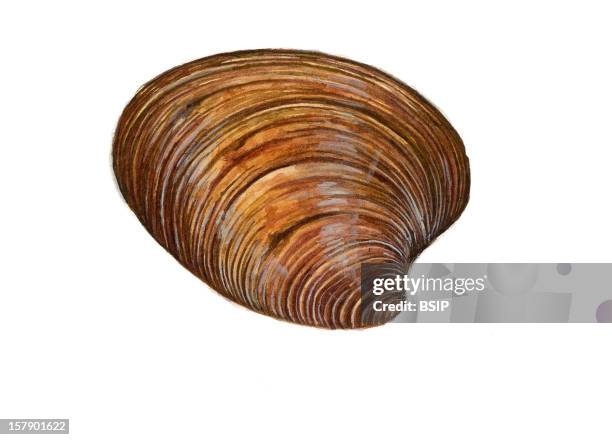
Lamellibranchia feeding
Large gills = large surface area and v-shaped. Very efficient at gas exchange.
Surface are ciliated in the gills that create lateral water currents, food moves through the front food grooves. Food is sorted by the labial palps
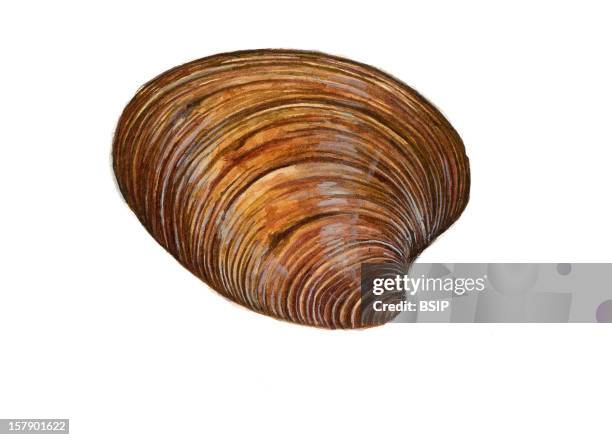
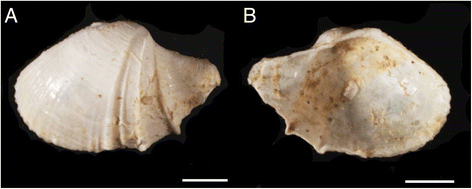
Septibranchia feeding
Gills form a septum and create suction to force food in
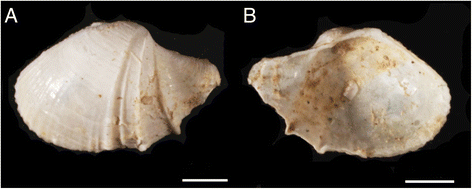
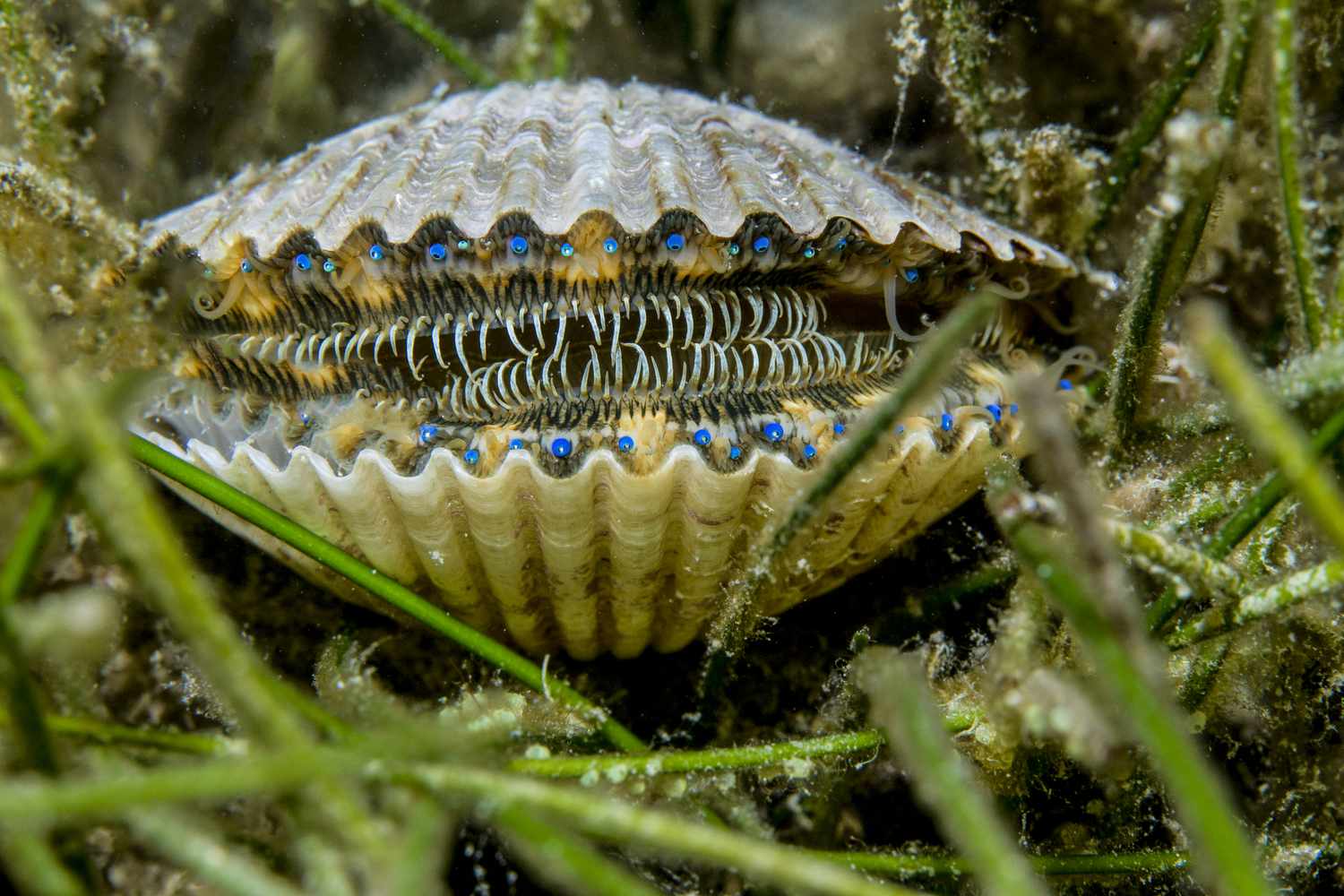
Bivalve digestion
Food is passed from the mouth to the esophagus
Drawn into stomach by rotation of the crystalline style
Protein and digestive enzymes
Style sac is ciliated - causes rotation and produces a new crystalline stle
Abrades against the gastric shield, and grinds the food and releases digestive enzymes.

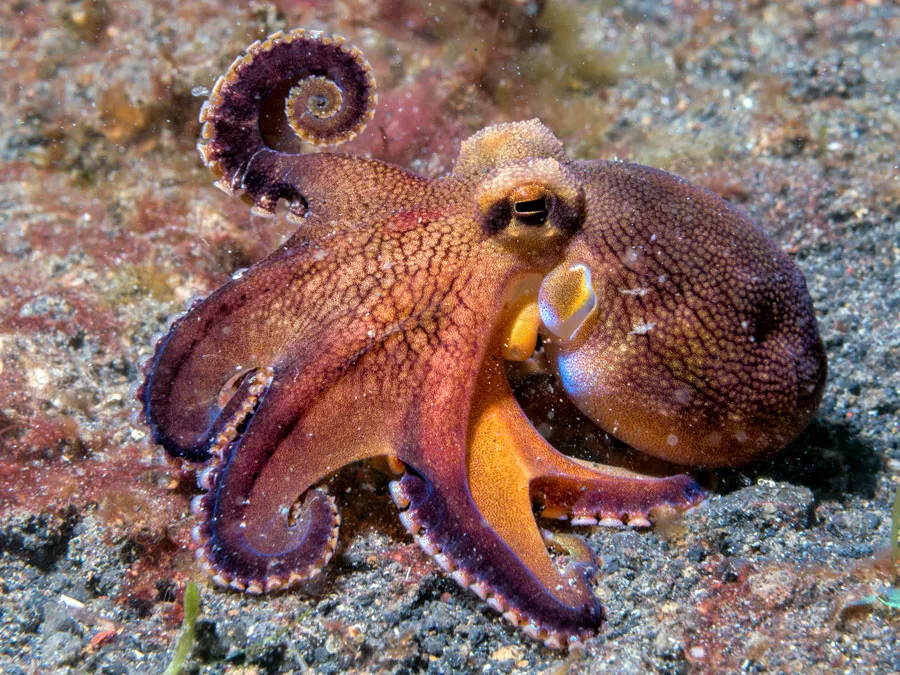
Class Cephalopoda
Name means “head foot”
All marine
Most are predatory and have a beak used for crunching prey
Elongated along dorso-ventro axis
Fastest, largest, and most intelligent mollusks
Shell divided by septa, reduction in shell allows for speed, pen used for ink.
Foot modified to form funnel, arms, and tentacles - with suckers!
Closed circulatory system - systemic heart, 2 branchial hearts, blood pigments is hemocyanin (blue blood)
Ink sacs
Photophores can emit light
Chromatophores and iridocytes are specialized pigment cells, innervated, they can help with mating and threat displays as well as camo to prevent predation.
Nervous system well developed with multilobed brain, eyes, and giant axons.

Subclass Nautiloidea
External shell present
Lives in an outer chamber of the shell, which other parts of shell are filled with gas and low density liquid, siphuncle
Located in the Indo-Pacific
Deep water
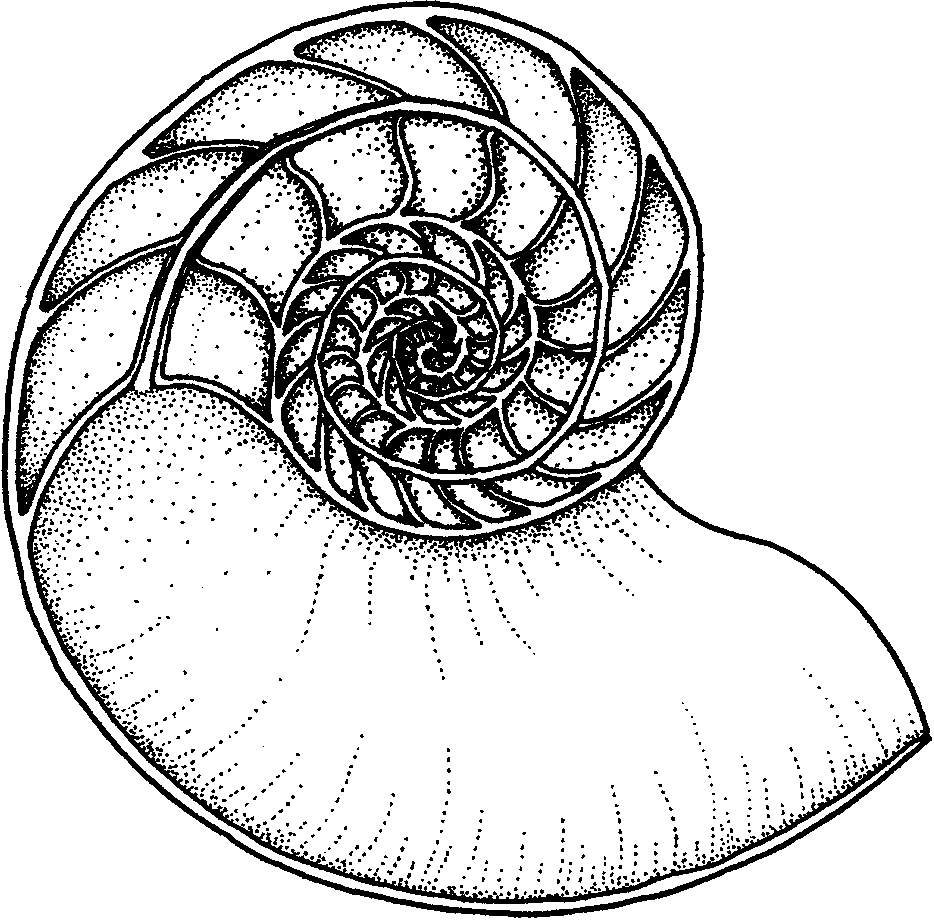
Siphuncle
a tube-like tissue that runs through the shell of a cephalopod mollusk to help it maintain neutral buoyancy

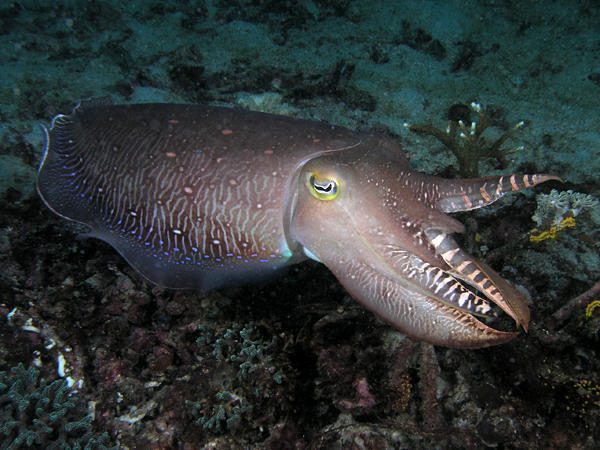
Subclass Coleoidea
Mantle greatly thickened
Jet propulsion
Powered by siphon
Squid are constantly swimming, using the fins is a slow process
Cuttlefish and Octopods are in this groups.
Octopods hide and crawl
Reproduction
Gonochoristic
Internal fertilization - males have specialized arms (hectocotylus)
Direct developers

Gonochoristic
having separate sexes, or being dioecious
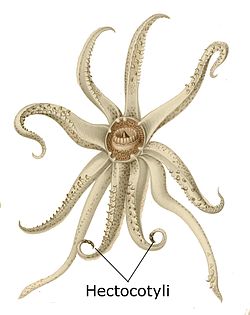
Hectocotylus
a modified arm used by male octopuses and some other cephalopods to transfer sperm to the female.
